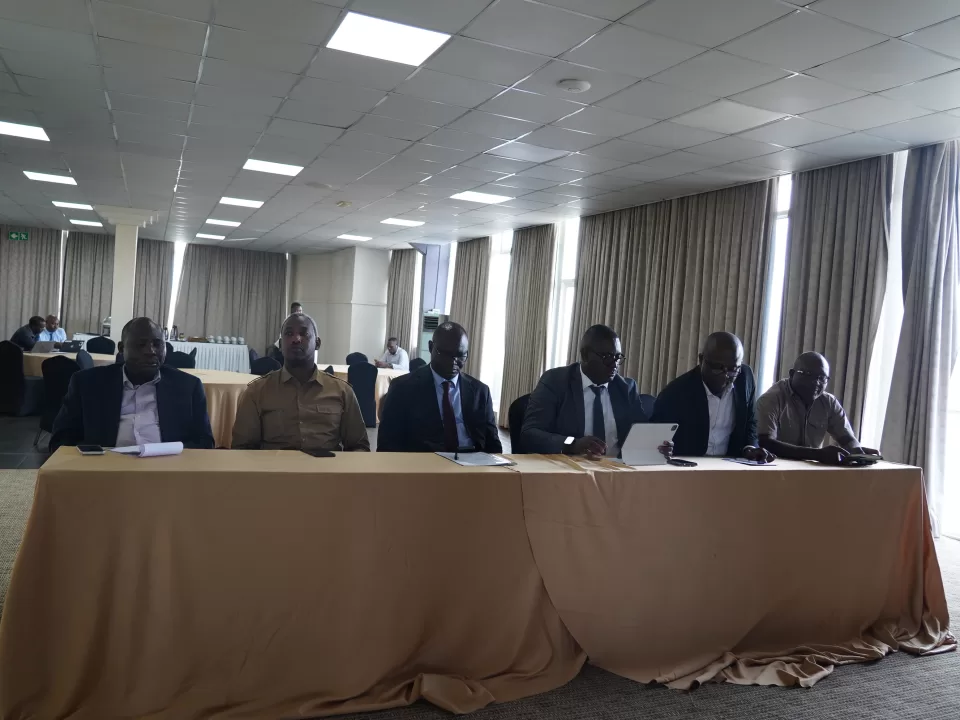Participatory approach in developing the Greater Virunga Landscape Transboundary Strategic Plan appreciated by the stakeholders.
The Transboundary Strategic Plan is the tool that guides the interventions of Greater Virunga Transboundary Collaboration. The current Transboundary Strategic Plan runs from 2018 and is ending by 2023. In this perspective, GVTC in collaboration with WWF have hired Kilimanyika Group experts to facilitate the development of the new Transboundary Strategic Plan for ten years running from 2024 to 2033.
The experts from Kilimanyika Group are using the participatory approach to collect views and ideas on the priorities which should be put in this ten-year Transboundary Strategic Plan. Different categories of persons are being consulted in different areas and communities living around the protected areas forming the Greater Virunga Landscape in the three GVTC Partner States.

Consultants from Kilimanyika Group (in the middle of the group) consulting the vulnerable group living around Mgahinga Gorilla National Park, known as “Batwa” in Kisoro District, Uganda on 17th November 2023
In this perspective, local leaders, non-governmental organizations, civil society, community-based organizations, and indigenous people were consulted.
Despite the previous interventions and achievements, the consultations revealed that much more effort is required in order to improve on Greater Virunga Conservation and Tourism development which are the key themes of GVTC as enshrined in its Treaty signed between the GVTC Partner States Democratic Republic of Congo, Republic of Rwanda and the Republic of Uganda.
The consulted persons brought out the issues of human-wildlife conflicts, where animals are still getting out of the parks to destroy their crops. This needs a sustainable solution, and for them, they are of the view that an electric fence can be a better one than the current physical deterrent measures.
Water scarcity is still an issue in some of the areas around the protected areas. The communities would be happy to see those areas provided with water. The livelihood also is an area which needs to be worked on during the ten-year strategic plan. Communities should benefit more from the revenue generated from the protected areas’ resources since they are the ones who are at the forefront of the protection. In this respect, projects improving the livelihoods of the community members should be given priority like the provision of livestock as a means of producing manure to be used in agriculture but also as a source of animal vitamins, education sponsorships to the poor communities, cross border study tours,…
Insecurity and safety of wildlife and tourists was mentioned as one of the key pillars on which the ten-year GVTC Strategic Plan should be built on. GVTC partner states should work hard to silence arms within this region in which various negative forces are destroying what should be protected. Note that on the Democratic Republic of Congo side, Virunga National Parc, despite its endangered world heritage site status, it is being destroyed in front of the international community’s eyes. After peace restoration, and refugees return home, the parc’s restoration should be a priority.
Indigenous people should not be left out. They have pointed out that, the fact that they don’t own land, and they don’t have any other source of income except handcraft making which is not organized and advanced due to lack of training, accompaniment, and guidance.
Tourism infrastructures are still an issue, where tourism roads, community tourism facilities, conservation and tourism-related learning institutions are not available, while these should serve as the foundation of wildlife education for an improvement of Greater Virunga Landscape conservation.
Non-farming-related jobs should be created, coordination of stakeholders should be strengthened, and ownership in conservation of the natural resources should guide all the interventions. Environmental-friendly practices and policies must be promoted without forgetting the role that communication and information-sharing campaigns play in raising awareness.
All of these ideas were expressed during the trip of the consultant from Kilimanyika Group: Mr. Paul Harrison, Executive Chairman and Mr. James Laizer, the Director accompanied by Mr. Juvenal Mukeshimana, Program Assistant of Greater Virunga Transboundary Collaboration from the 15th to the 20th November 2023. Local leaders and communities from Musanze, Nyabihu, Burera and Rubavu Districts in Rwanda, local leaders, and communities from Nyarusiza and Muramba Sub counties of Kisoro District in Uganda, local leaders, and communities from Bwisha and Rutshuru in North Kivu Province of the Democratic Republic of Congo participated in this consultation meetings.

Consultants from Kilimanyika Group meeting the Executive Secretary of Kinigi Sector, Musanze District ( in the middle) at the Office of the sector on 15th November 2023

Kilimanyika Group consultants meeting communities living around Volcanoes National Park, at the Headquartes of Volcanoes National Park on 15th November 2023

At Bugeshi Sector of Rubavu District in Rwanda, the Consultants are consulting the Executive Secretary of that Sector

Executive Secretary of Kabatwa Sector, Nyabihu District of Rwanda Madam Georgette, receives the consultants from Kilimanyika Group who are collecting views to be incorporated in the GVTC 10 year strategic plan. November 16, 2023

Community Conservation Warden in Mgahinga Gorilla National Park, Uganda meets the Consultants on 17th November 2023

Meeting with Communities (Women) Kisoro District, Uganda 17 November 2023

Consultant from Kilimanyika consult the group of men, at the Nyarusiza Sub County of Kisoro District- Uganda 17th November 2023





Communities of Burera District, around Volcanoes National Park are in a meeting with the Kilimanyika Consultants at Cyanika Sector on 16th November 2023

Consultants meet Batwa community in Kisoro District of Uganda
The outcome of the consultation shall be compiled in a ten-year strategic plan and presented to the selected persons for improvement before its validation and implementation.





